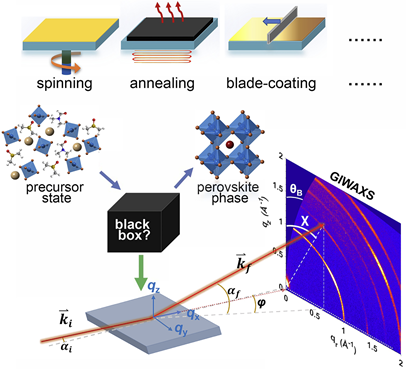
Metal halide perovskites are of fundamental interest in the research of modern thin-film optoelectronic devices, owing to their widely tunable optoelectronic properties and solution processibility. To obtain high-quality perovskite films and ultimately high-performance perovskite devices, it is crucial to understand the film formation mechanisms, which, however, remains a grand challenge, due to the complexity of perovskite composition, dimensionality, and processing conditions. Nevertheless, the state-of-the-art in situ grazing-incidence wide-angle X-ray scattering (GIWAXS) technique enables us to bridge the complex information with device performance by revealing the crystallization pathways during the perovskite film formation process. In this review, we illustrate how to obtain and understand in situ GIWAXS data, summarize and assess recent results of in situ GIWAXS studies on versatile perovskite photovoltaic systems, aiming at elucidating the distinct features and common ground of film formation mechanisms, and shedding light on future opportunities of employing in situ GIWAXS to study the fundamental working mechanisms of highly efficient and stable perovskite solar cells towards mass production.
The review article by Minchao Qin, Pok Fung Chan, and Xinhui Lu was accepted by Advanced Materials, 2021, DOI: 10.1002/adma.202105290.
